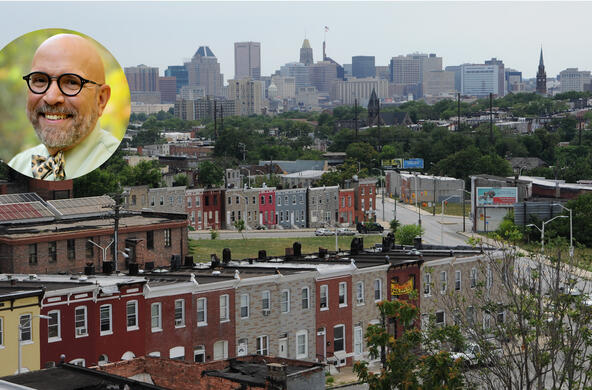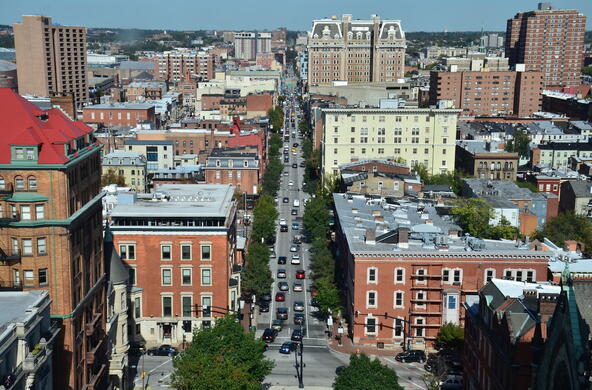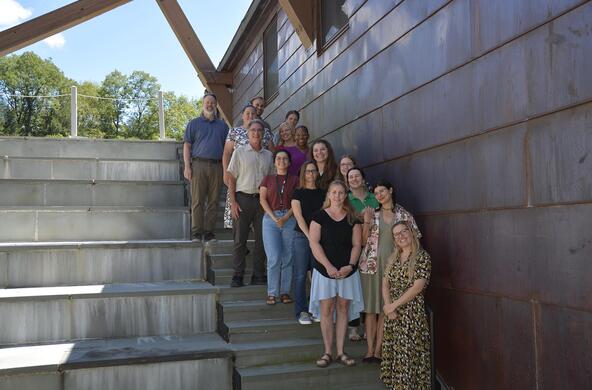Trees planted along city streets can benefit community health and local ecosystems in many ways. A study published in Ecosphere in February confirms that, in Baltimore, tree-lined streets added significantly to the city’s biodiversity and biomass. Unfortunately, the study also finds that street trees and their benefits are largely concentrated in wealthier neighborhoods, and suggests that city-managed programs investing in street trees may be reinforcing those inequalities.
“Communities who don't have equal access to mature, diverse street trees are the same communities that are dealing with other significant problems due to historic redlining and systemic racism,” explained Elsa Anderson, who led the study as a post-doctoral researcher at the Cary Institute of Ecosystem Studies, and is now an assistant professor at Northwestern University. “It is critical that cities invest in the futures of these neighborhoods, especially with an eye towards reducing gentrification, and planting and maintaining appropriate street trees can contribute to this investment.”
Among their many benefits, urban trees can help absorb flood waters and lower heating and cooling costs. They are also linked to better air quality, lower rates of violent crime, positive mental health, and higher property values. For municipalities aiming to ‘green’ their cities and reap these benefits, planting trees along streets is often one of the first steps, since the land is publicly owned.
How much do street trees contribute to the biodiversity of urban forests, and how do those contributions vary across neighborhoods of different social and economic backgrounds? Anderson and her colleagues at Cary Institute and the U.S. Forest Service examined these questions in Baltimore, Maryland.
To answer the first question, the researchers drew on a tree inventory published in 2017 by the City of Baltimore, Tree Baltimore, and Baltimore City Recreation and Parks. They compared the number, size, and diversity of tree species planted along the street versus in other parts of the urban landscape — such as in parks or private yards — in 202 randomized sites across the city.
They found that Baltimore’s street trees were typically larger and more species-rich than the trees in random plots, adding significantly to the city’s biodiversity and tree biomass. Of the 154 tree species documented across Baltimore, 53 — nearly a third — were found only in the street tree communities, and 36 were found only in the randomized plots.
“The amount of diversity that street trees added at both the local and city scales was surprising,” said co-author Shannon LaDeau, a Disease Ecologist at Cary Institute.

Pulling on data from the U.S. Census — including median household income, proportion of residents identifying as white, and population density — the researchers then looked for socioeconomic patterns associated with the number and composition of street trees, and how they contribute to the urban forest overall.
The analysis revealed that even though municipalities may aim to target street tree investment in neighborhoods with historically low tree canopy cover, street tree abundance was still greatest in wealthier and whiter neighborhoods. Wealthier areas also had larger street trees, greater street tree diversity, and a higher number of unique species — all traits that could add to the local benefits of trees.
Thus, the study concludes that street trees and their benefits are not distributed equitably throughout Baltimore. The authors note that these inequalities may reflect several factors, including modern biases in where trees are planted; the legacy of historical policies like redlining, which discouraged investment in communities of color in the 1930s; and communities’ differing abilities to care for trees after they are planted.
LaDeau pointed out that the smaller, newer trees planted in lower income communities do not provide nearly as much canopy cover as the older trees in wealthier neighborhoods. Hence, municipal tree-planting programs should not merely aim to plant equal numbers of trees across the city, but should invest more in disadvantaged communities to make up for past deficits, said LaDeau. That means investing more in both the quantity of trees, and in the quality of the care that the trees receive after planting.
Newly planted trees require regular watering, especially in the first several years, but this care is often not included in the budgets for tree-planting initiatives. Instead, the responsibility is left to residents or neighborhood groups — some of which have more resources and capacity than others.
“While wealthier neighborhoods with more resources and time are more likely to water and care for city trees adjacent to their homes, this is a major barrier in low-income neighborhoods,” said Anderson. She added that city governments can make tree maintenance more equitable by partnering with and investing in environmentally-minded community groups in disadvantaged neighborhoods.
“Prioritizing supporting residents who are invested in improving green space and trees in their own neighborhood and providing them with resources to engage their neighbors in some of this care is hard work,” she said, “but has significantly more benefit in the long run.”
Citation
Anderson, E.C., Locke, D.H., Pickett, S.T.A, LaDeau, S.L. (2023). Just street trees? Street trees increase local biodiversity and biomass in higher income, denser neighborhoods. Ecosphere. https://doi.org/10.1002/ecs2.4389
Investigators
Elsa C. Anderson - Cary Institute of Ecosystem Studies; Northwestern University
Dexter H. Locke - USDA Forest Service Northern Research Station
Steward T. A. Pickett - Cary Institute of Ecosystem Studies
Shannon L. LaDeau - Cary Institute of Ecosystem Studies
This work was funded by the Baltimore Ecosystem Study, part of the National Science Foundation's LTER program (DEB-1637661 and DEB-1855277), and by the Cary Institute of Ecosystem Studies.






